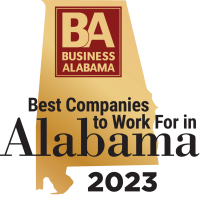Chapter 6: How to Save Money in Production Line with Better Bottling Practices
As mentioned in the previous chapter, optimizing your compressed air system and increasing efficiency through better packaging and bottling practices can help you save money on annual energy expenses.
Only Use Compressed Air When Needed
For many applications, supplement the use of compressed air with less energy-intensive tools. Inefficient use of compressed air results in unnecessary expenditures. You can replace compressed air in open-blowing applications with other methods. In some bottling plants, drying, labeling, sealing, warming and rinsing processes use compressed air.
While compressed air is a convenient and essential resource in bottling, there may be alternatives for other parts of the bottling process. An energy audit conducted by a professional will help you assess which of your applications run most efficiently on compressed air.
Prevent Unused Equipment From Using Compressed Air
Turning off the compressed air system when it’s not in use, or preventing compressed air from reaching idle equipment, are effective methods for improving efficiency at your plant. Even when not in use, the demands required by the system continue to consume electrical energy. This wasted horsepower could be a hidden cost in your annual energy expenses.
Optimize Compressed Air Systems During Use
Optimizing your compressed air system by ensuring that only the needed operating pressures are in use during bottling, as well as maintaining your system, can lead to subsequent energy savings.
Inspecting your system for leaks is another vital step in reducing waste. Even small air leaks can lead to costly energy bills and could be detrimental to the longevity of your equipment. Leakages result in higher downtime, inefficient operation of tools and higher maintenance costs, and can cause increased demand on your system.
Practice Maintenance and Take Preventative Actions
Conducting routine maintenance on your equipment and compressed air system is a preventative measure against serious system malfunctions. Creating a schedule to inspect for leaks and other inefficiencies results in higher productivity, increases the longevity of your equipment and reduces energy expenditures.
Small maintenance steps make a big difference in eliminating waste in the bottling line and reducing the energy needed in your compressed air system.
Table of Contents
- Crafting Great Beer and Spirits
- Chapter 1: A Brief History of Beer — An Ancient Beverage
- Chapter 2: Nature's Contribution — The Ingredients
- Chapter 3: The Art of Brewing and Distillation
- Chapter 4: The Tools of the Trade — Vessels, Stills, and Compressors
- Chapter 5: How to Increase Energy Efficiency in Microbreweries and Distilleries
- Chapter 6: How to Save Money in Production Line with Better Bottling Practices
- Chapter 7: The Microbrewing and Craft Beer Movement
- Chapter 8: Evolution of Crafting Beer and Whiskey

